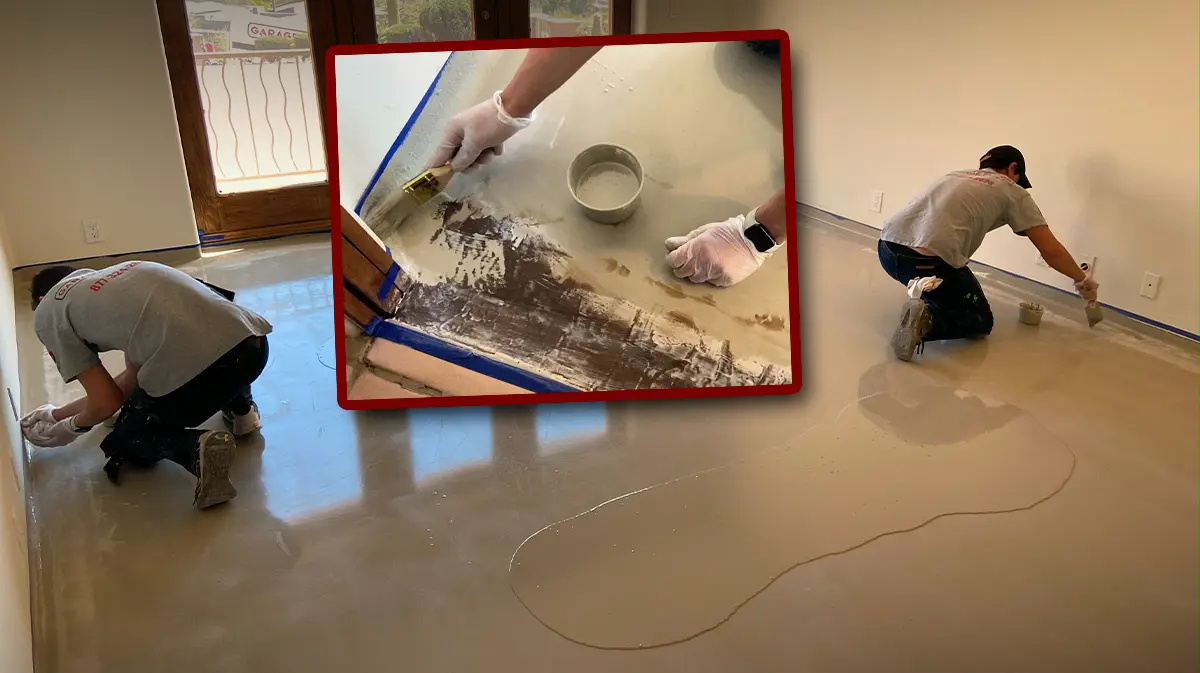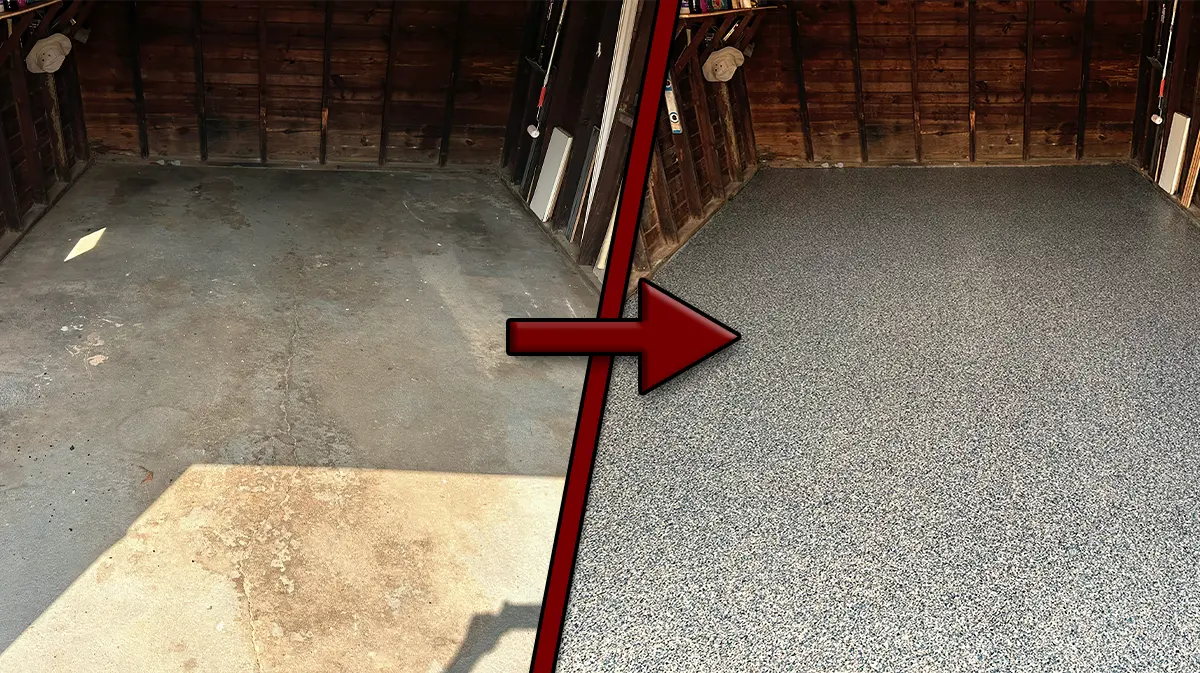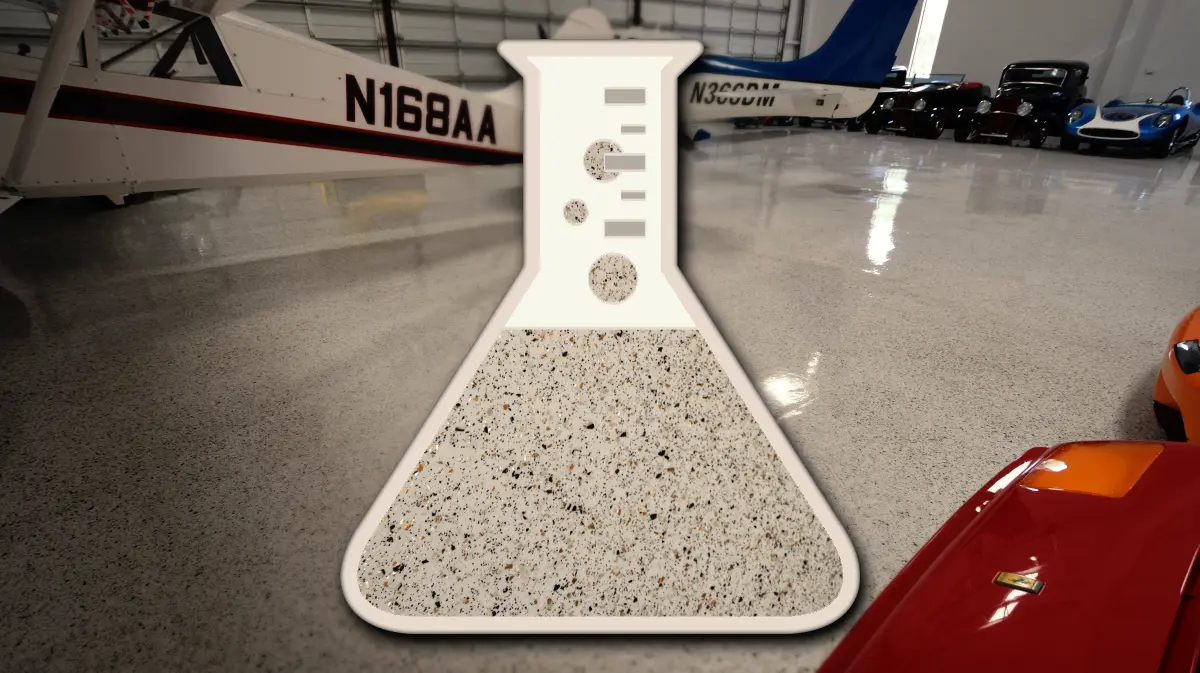Michigan’s weather is unpredictable. From frigid winters with snow and ice to hot, humid summers, your garage floor has to deal with a lot. That’s why so many Michigan homeowners are turning to epoxy floor coatings. The best epoxy floors are tough, long-lasting, and can handle whatever Mother Nature throws their way.
But here’s the thing: the durability of your epoxy floor doesn’t just come from the application. It starts with the mix. Whether you’re dealing with the chill of a Michigan January or the sticky heat of July, getting that epoxy mix just right is key to making sure your garage floor stands the test of time.
Step 1: Best Epoxy Floors – Understanding the Epoxy Formula
Epoxy coatings are made up of two key parts—Part A (the resin) and Part B (the activator). When these two come together, they create a chemical reaction that turns the liquid mix into a solid, protective surface. Sounds simple enough, right? Not quite.
The ratio between these components needs to be precise, and depending on the product, you could be looking at different formulas like 1:1, 2:1, or even 4:1. Add in Michigan’s weather fluctuations, and the mix can get tricky. Some products even require a solvent, adding another layer to the mix.

Step 2: Best Epoxy Floors – Avoiding Common Mixing Mistakes
Now, let’s talk about the mistakes that can trip you up:
- Measuring Inaccurately: Precision is everything. A small misstep in the ratio can lead to a weak, brittle coating that doesn’t hold up to Michigan’s weather. An Electronic Coatings Calculator can help make sure everything is measured just right.
- Using the Wrong Tools: Proper tools make all the difference. A high-speed drill with a specific mixing blade ensures the epoxy is blended smoothly and evenly. Without it, you risk creating air bubbles or clumps that compromise the finish.
- Mixing the Wrong Products: Mixing parts from different epoxy brands or lines can lead to a chemical mess. Keep your materials organized, and always double-check the labels before you start.


Step 3: Mixing Best Practices for Michigan’s Climate
Here’s how we approach epoxy mixing so your floor meets the demands of Michigan’s tough environment:
- Mix Part A First: If you’re using a pigmented epoxy, we mix Part A thoroughly to ensure even color distribution.
- Add Part B Slowly: Once Part A is smooth, we slowly add Part B, blending it carefully to prevent air bubbles.
- Batch Mixing for Consistency: When using multiple containers of Part A, we batch them together and pre-mix before adding Part B to ensure consistency in color and texture across the entire surface.
Why Precision Matters
Michigan’s weather can be extreme, and that means your epoxy floor needs to be built to handle it. When the mix is precise, the floor becomes more resistant to the elements—whether that’s the wear and tear from snow, salt, or moisture. Precision in mixing ensures the strength and durability needed for long-term performance.

Professional Installation: The Right Choice for Michigan Homeowners
Here’s the bottom line: Mixing epoxy the right way isn’t just about following instructions. It’s about understanding the product, the environment, and the best practices for a flawless finish.
Michigan’s extreme temperature changes and moisture levels is an environment best left for the professionals. We bring years of expertise to the table, ensuring that each mix is perfect and every floor is built to last.
Conclusion: Your Michigan Epoxy Experts
Don’t let Michigan’s weather destroy your garage floor. Trust the experts and their ability to precisely mix the epoxy for a perfect finish. With the right epoxy mixology, you’ll get a garage floor that’s as tough as Michigan’s winters and as sleek as its summers.

